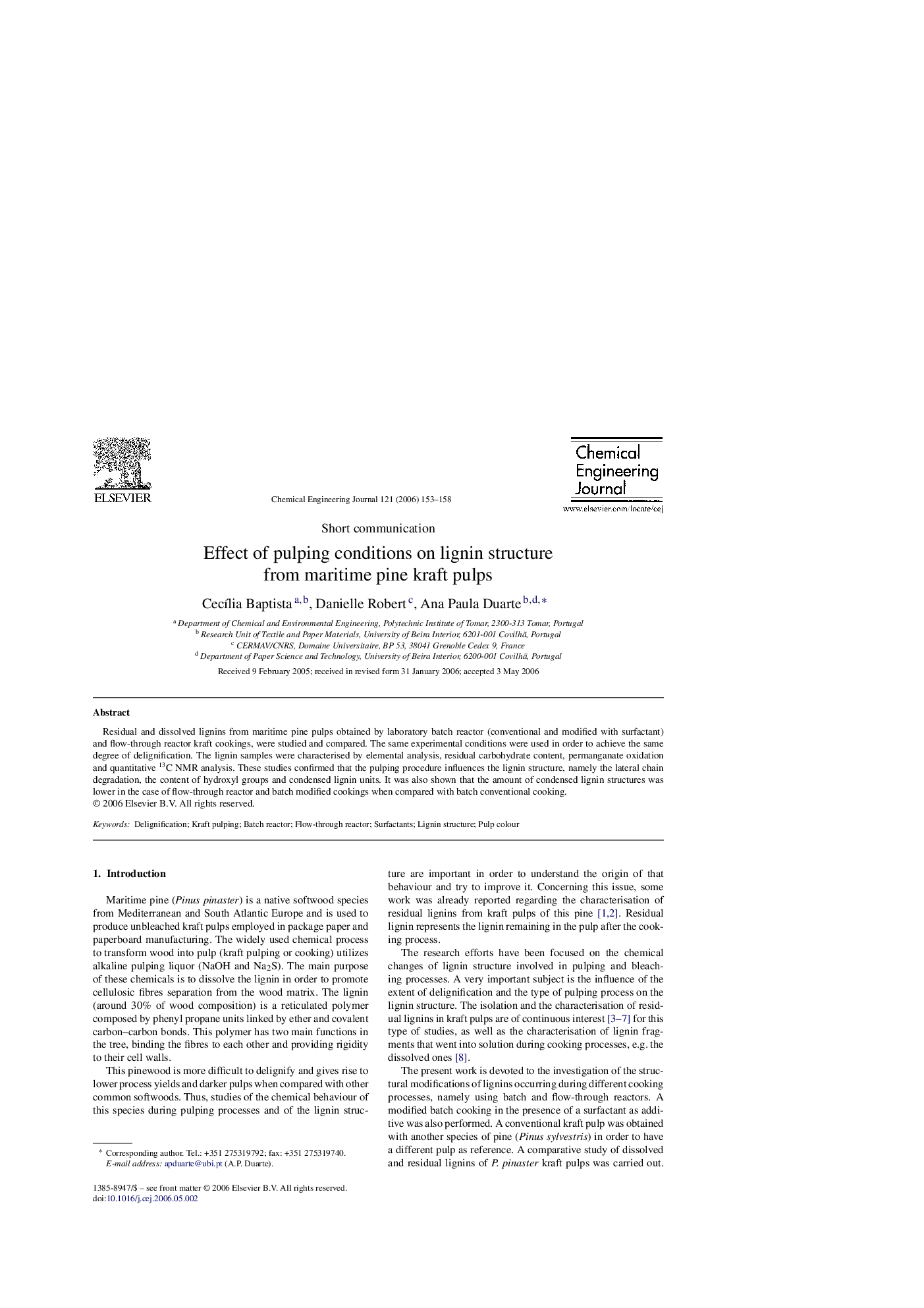| کد مقاله | کد نشریه | سال انتشار | مقاله انگلیسی | نسخه تمام متن |
|---|---|---|---|---|
| 154265 | 456573 | 2006 | 6 صفحه PDF | دانلود رایگان |

Residual and dissolved lignins from maritime pine pulps obtained by laboratory batch reactor (conventional and modified with surfactant) and flow-through reactor kraft cookings, were studied and compared. The same experimental conditions were used in order to achieve the same degree of delignification. The lignin samples were characterised by elemental analysis, residual carbohydrate content, permanganate oxidation and quantitative 13C NMR analysis. These studies confirmed that the pulping procedure influences the lignin structure, namely the lateral chain degradation, the content of hydroxyl groups and condensed lignin units. It was also shown that the amount of condensed lignin structures was lower in the case of flow-through reactor and batch modified cookings when compared with batch conventional cooking.
Journal: Chemical Engineering Journal - Volume 121, Issues 2–3, 15 August 2006, Pages 153–158